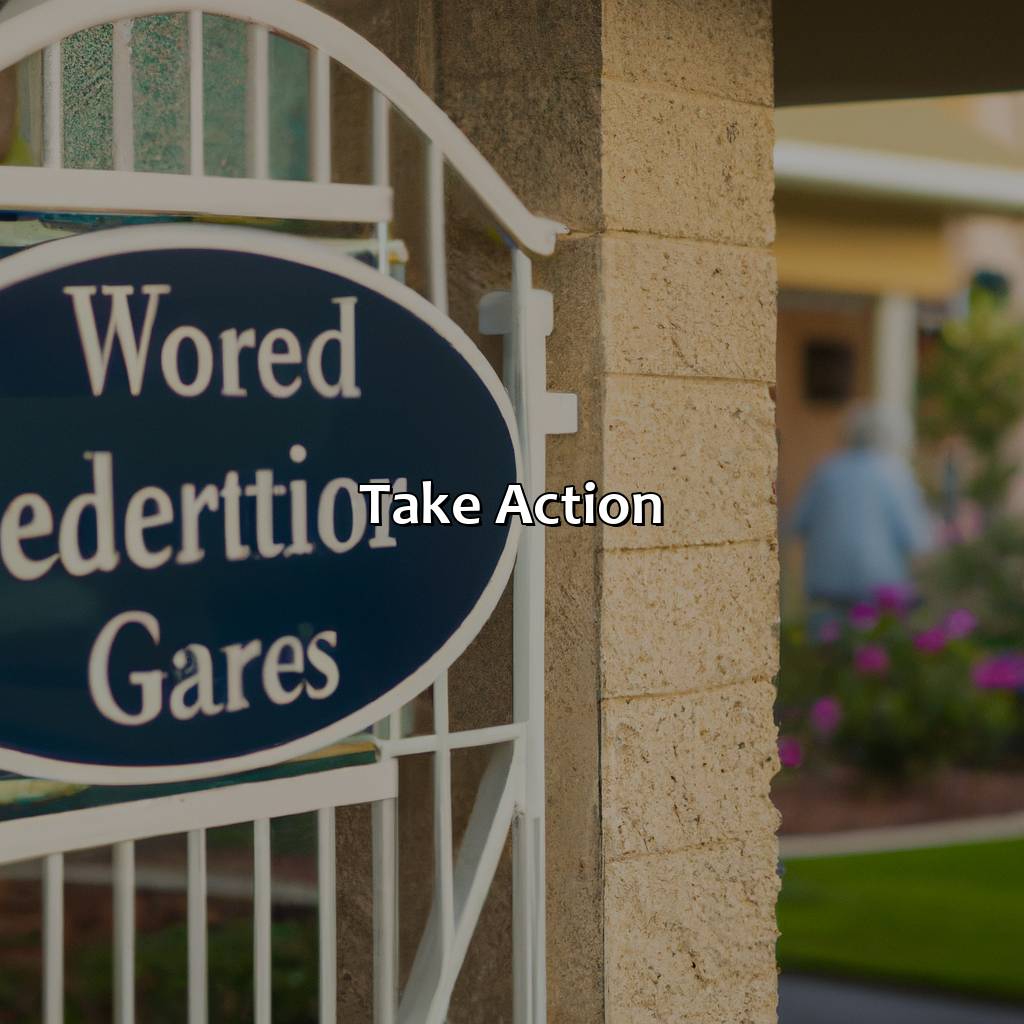How To Start The Retirement Process?
Key Takeaway:
- Assess your retirement savings: Before starting the retirement process, it is essential to evaluate your current retirement savings to determine if you have enough to meet your retirement goals.
- Create a retirement plan: Determine your retirement goals, expenses, and income to create a retirement plan. Identify strategies to fill the gap between your expenses and income.
- Make lifestyle adjustments: Evaluate your housing needs, plan for healthcare expenses, consider part-time work, and adjust your budget to make necessary lifestyle adjustments.
- Prepare for retirement: Review your investments, decide when to claim social security benefits, and plan for required minimum distributions (RMDs).
- Take action: Set clear goals and deadlines, start saving more, consult with a financial advisor, and monitor your progress to ensure a comfortable retirement.
Are you feeling lost in the retirement landscape? You’re not alone. This article provides helpful advice on how to get started on the retirement process and make the most of your golden years. Read on to find out more!
Assess Your Retirement Savings
Assessing Your Retirement Funds
To prepare for retirement, it’s crucial to evaluate your financial status. Determine the amount you’ve saved and invested for retirement. Consider the expenses you’ll incur in your post-work years, such as healthcare needs, travel costs, and housing. Assess your income streams and determine if you need to boost your savings to maintain your standard of living in retirement.
To get a clearer picture of your financial standing, calculate your expected expenditures and inflows, including social security benefits and any pensions. This holistic approach will enable you to make sound pre-retirement financial decisions.
Considering your lifestyle and circumstances, create a realistic budget to help achieve your retirement goals. You might have to make adjustments in your spending habits to save more for retirement. Developing a solid plan can help you achieve financial security during this phase of life.
Here are some tips to bolster your retirement savings:
- Consider contributing additional funds to your 401(k) or IRA to increase your return on investment.
- Reducing your debt load and avoiding unnecessary expenses can also help you save more for retirement.
Think ahead, and keep a watchful eye over your expenses, income, and investments. With careful attention and persistence, you can ensure financial solvency in retirement.

Image credits: retiregenz.com by James Jones
Create A Retirement Plan
To begin your retirement process, you need a plan. Consider these factors: Goals, Expenses, Income, and Strategies. We’ll give a brief overview of each. This will help you make a complete retirement plan.

Image credits: retiregenz.com by Harry Woodhock
Determine Your Retirement Goals
Establish Your Aim for Retirement
To prepare yourself for retirement, begin by formulating clear and specific goals. Determine the type of lifestyle you wish to lead, where you want to reside, and how much you want to save. These objectives will serve as a guidepost while creating your retirement plan.
You need to decide on your scope of expenses as well as the date when you plan to retire. Understanding the statistics of life expectancy may also play an important part in developing financial goals which can serve as a blueprint towards achieving them.
Consider getting professional guidance from financial advisors, who have the expertise necessary to help complete your retirement planning process successfully.
An AARP research study suggests that eight out of ten people overestimate their readiness for retirement, emphasizing the critical role of sound retirement planning.
Get ready to do some math and feel like you’re back in school, but this time there’s no bell to save you from your retirement expenses.
Calculate Your Retirement Expenses
In order to prepare for your retirement, it is important to determine your future financial requirements. This can be achieved by estimating your ‘Expected Retirement Expenses’. Here’s how you can do it:
- Identify the basic necessities of life
- Determine your healthcare costs
- Estimate the expenses on leisure activities and hobbies
- Consider the impact of inflation on expenses
- Add a buffer amount for emergency expenses
It is also important to factor in whether you have any existing debt or ongoing obligations that may affect your retirement savings. It will help you arrive at a more accurate estimate.
To avoid feeling overwhelmed during your golden years, make sure to plan early and account for all possible expenses in your cost projections.
Don’t wait any longer, start planning for your retirement today! Remember that every step taken towards financial readiness brings exponential security and peace of mind in the future.
“Retirement income: the difference between sipping margaritas on a beach and drinking tap water in a basement apartment.”
Determine Your Retirement Income
Determining your retirement income is crucial when creating a retirement plan. To identify the sources of income, it’s essential to analyze your current and future expenses and estimate how much you’ll require once you’ve retired. This analysis will provide an estimate of how much income you need monthly.
To determine your retirement income, start by considering the assets and savings that can generate investments, such as RRSPs, TFSAs, pensions or real estate properties. You must also plan for government support programs such as Old Age Security (OAS) or Canadian Pension Plan (CPP), which can provide additional funding.
Additionally, keep inflation in mind while estimating expenses for a post-retirement living. Saving more money towards the end of your career helps mitigate inflation’s potential impact on costs down the line.
Planning ahead can significantly enhance financial welfare during retirement. By creating a budget well in advance and understanding how to fund future activities like travel, hobbies or continuing education after retirement is vital to live comfortably financially. Taking these steps towards determining your retirement income will help you to make informed decisions and ensure a happy post-retirement life.
Retirement planning tip: if your savings don’t quite cut it, try selling all the useless stuff you accumulated over the years. Your grandkids don’t really need that creepy clown statue, trust me.
Identify Strategies To Fill The Gap
Strategies to Bridge Retirement Income Gap
Various strategies can be employed to bridge the retirement income gap. These include creating multiple sources of income, such as rental properties or part-time work, generating passive income through investments like stocks, and minimizing expenses in order to maximize savings.
Other techniques for filling the retirement income gap include opening a health savings account to cover healthcare expenses, delaying social security benefits to increase payments, and considering downsizing one’s living arrangements. Additionally, individuals can consult with financial planners or advisors to develop a personalized plan.
It is also worth noting that while bridging the retirement income gap is important, it is equally important to maintain a healthy lifestyle and manage one’s mental and physical well-being in order to ensure a fulfilling retirement.
History has seen several cases of retirees who did not adequately prepare for their retirement years. Without proper planning and execution of financial strategies, many older adults find themselves struggling financially during their golden years.
Retirement plan: swap out the morning coffee for a morning jog and your bank account will thank you almost as much as your heart!
Make Lifestyle Adjustments
Evaluate your housing needs to adjust your lifestyle during retirement.
Plan for healthcare expenses.
Think about part-time work.
Change your budget.
These sub-sections can help you make changes for a comfortable retirement.

Image credits: retiregenz.com by Joel Duncun
Evaluate Your Housing Needs
One crucial aspect of planning for retirement is assessing your abode. Analyzing where you live and determining its suitability requires careful consideration. You must factor in various elements, such as finances, location, accessibility, surroundings, amenities, and future needs.
Upsizing or downsizing can be a viable option to consider based on your current and prospective living conditions. For example, if you are considering moving from a suburban area to a rural site post-retirement, will your current home provide the comfort and adaptability necessary? It would be best to evaluate these options before making any significant decisions.
Location is critical. Consider factors like proximity to family members, recreational facilities & medical services when selecting your residency. In addition, take note of lifestyle preferences such as living in an area with lots of natural greenery or wanting quick access to entertainment venues.
For many retirees who prefer physical interaction outside their homes, there could arise at some point an opportunity or need for shared living spaces with less workload and maintenance responsibilities compared to a single-family house. Looking at this history better exemplifies the considerations one should make when evaluating housing alternatives: Beverly decided on choosing a co-housing community where responsibilities were communal but living space was private while her husband opted for a small motor-home that enabled him travel around while maintaining his independence during retirement age.
When you retire, your healthcare plan goes from ‘sick days’ to ‘sick of paying for it’.
Plan For Healthcare Expenses
Prep for Health Expenses
Retirement requires planning for healthcare expenses too. It’s crucial to be prepared and have a plan in place to ensure that you can continue accessing good health care even once you’re retired. Take advantage of Medicare benefits and enroll for supplemental coverage, but also consider long-term care insurance to further alleviate the cost burden.
Planning for healthcare expenses is one of the most necessary aspects of retirement planning. Medical costs are likely to increase as one ages, and with longer lifespans it’s important that both short-term and long-term costs are taken into account. Exploring different options like Medicare supplement plans or long-term care insurance policies can significantly ease the financial concern.
With increasing medical inflation rates every year, healthcare expenditures become an unavoidable necessity for retirees. And if not planned out well in advance, this unforeseen expensive consequence could burn a hole in their pockets.
According to a report by US News & World Report, research from Fidelity forecasts that “the average 65-year-old couple retiring in 2020 will need $295,000 saved (in after-tax dollars) to cover health-care expenses throughout retirement.”
Retirement may mean less work, but part-time work means less boredom and more money for the grandkids’ college fund.
Consider Part-Time Work
For individuals who plan to start their retirement process, assigning themselves to part-time work can be a viable option. It allows for continued social interaction and keeps cognitive and physical abilities sharp while easing them into full retirement. Furthermore, it provides a source of income that supplements their retirement savings.
Part-time work preceding full retirement is a great way to transition yourself from a work environment to a more relaxed way of life. For example, you may consider working fewer days or hours each week, taking on jobs with flexible schedules that enable you to balance your leisure time with your professional commitments. Additionally, if you’ve always had an interest in entrepreneurship, freelance consulting might be the way to go.
On the other hand, if you’re seeking social interaction and like being around people in a lively atmosphere, customer service or retail positions are fantastic choices. Some seniors opt for substitute teaching as part-time work. This not only allows them to provide their expertise within the field but often benefits the future generation.
According to the Bureau of Labor Statistics report in 2020, 27% of senior citizens aged 65+ remain actively employed at any percentage point of time during retirement age (Bureau of Labor Statistics).
Retirement planning tip: Cut back on your avocado toast budget and start investing in your future instead.
Adjust Your Budget
Budget Reconfiguration for Financial Stability
For retirement, adjusting your financial plan is necessary. Here are 5 ways to adjust your budget:
- Reduce non-essential spending
- Re-evaluate recurring expenses
- Consider downsizing or relocating
- Save up emergency funds that cover at least six months of expenses
- Pay off debts and avoid new ones
In addition to these approaches, taking a career break can have negative long-term implications on your savings. To avoid this plight and cope with the reduction in income post-retirement, adjust your budget.
According to a study by Vanguard Group, retirees who follow an annual withdrawal protocol of 4% over 30 years’ time with moderate asset allocation increases their success rates of having enough savings during retirement tenure.
Retirement is like a long-term vacation, except you’re the one paying for it.
Prepare For Retirement
Review investments. Decide when to claim social security benefits. Plan for required minimum distributions (RMDs). These steps will help you prepare for a financially stable retirement. Each section is a key part of creating a strong foundation for your later years.

Image credits: retiregenz.com by James Woodhock
Review Your Investments
Assessing your investment portfolio is crucial when preparing for retirement. You must evaluate whether your investments align with your financial goals and risk tolerance. Determine if you need to make adjustments, consider diversification, and review fees and performance regularly.
To ensure that your investments are well-suited for your retirement plans, it’s essential to assess their alignment with the objectives and potential risks involved. Regular reviews allow you to fine-tune portfolios in response to market conditions or critical life events.
Additionally, understanding the impact of various investment vehicles can be vital in making informed decisions about how to allocate assets appropriately. Providing a diversified portfolio brings balance and could limit risk, but it is best based on a careful assessment of clients’ current situations.
Many individuals have found themselves ill-prepared for the reality of retirement due to insufficient preparations. By conducting regular evaluations of one’s investment portfolio, an individual can take proactive steps toward fiscal responsibility by avoiding poor financial decisions.
Deciding when to claim Social Security benefits is like trying to choose the lesser of two evils: working until you’re 85 or living off ramen noodles in your golden years.
Decide When To Claim Social Security Benefits
Knowing the right time to apply for social security benefits is crucial in preparing for retirement. Here are five points to consider when deciding on your social security claim age:
- Early retirement can reduce monthly payments.
- Achieving full retirement age is beneficial for maximizing benefit amounts.
- Delaying your claim after full retirement age can increase payments up to a certain point.
- Marital status can affect Social Security benefits and claiming strategies.
- Developing a plan with a financial advisor can ensure optimal benefit selection based on personal circumstances.
Remember that deciding when to claim Social Security benefits is just one aspect of retirement planning. Consult a financial advisor who specializes in retirement planning for personalized guidance.
Did you know that according to the Social Security Administration, nearly 9 out of 10 people aged 65 or older receive Social Security benefits?
RMDs: the only thing worse than getting older is being forced to give up more of your hard-earned money.
Plan For Required Minimum Distributions (RMDs)
To ensure adequate funds during retirement, it is essential to create a strategy for complying with Required Minimum Distributions (RMDs). Failure to observe this mandatory withdrawal rule can lead to high tax penalties and negatively impact the investment portfolio’s growth. Implementing an effective RMD plan enables retirees to enjoy their retirement years without worrying about future finances.
The RMD is determined annually based on the owner’s age and account balance as of December 31 of the previous year. It is crucial to monitor the account balance regularly to avoid tax penalties, as Roth IRAs are excluded from the distribution rule. People with multiple accounts should also calculate each’s RMD or consolidate them into one account. Consolidating IRAs simplifies recordkeeping and ensures that you do not miss any distributions.
Another important factor in preparing for RMDs is taking proactive measures such as balancing portfolios with long-term growth objectives, maximizing contributions before entering retirement, practicing strategic asset allocation strategies, and seeking professional advice from financial advisors. Evaluating options for IRA-to-Roth conversion might also help minimize taxes during retirement.
Taking action early when planning for RMDs helps reduce potential challenges that may arise after reaching age 72. Ignoring these policies could result in unexpected costs and taxation issues during retirement’s crucial years.
Don’t procrastinate on retirement planning, unless you enjoy working as a Walmart greeter into your 90s.
Take Action
Get ready for retirement! Set goals and deadlines, save more, talk to a financial pro, and watch your progress. Taking these steps can help you plan for retirement and make sure you reach your financial goals.

Image credits: retiregenz.com by Yuval Washington
Set Clear Goals And Deadlines
To Ensure a Smooth Retirement, Establish Thorough Goals and Deadlines
Retirement can be daunting, but setting clear goals and deadlines is key to a successful transition. Here are five steps to establish your retirement goals:
- Visualize what you want your retirement to look like.
- Determine how much money you will need to have the retirement lifestyle you desire.
- Create a budget and plan to save more for retirement if necessary.
- Identify when you want to retire and what benchmarks need to be met before that time.
- Regularly reassess your progress towards meeting your goals.
It’s important to note that everyone’s financial situation is unique. Your goals for retirement may differ from someone else’s, and that’s okay. Be sure to consult with a financial advisor if needed.
While setting deadlines is important, it’s also crucial to remain flexible in case unforeseen circumstances arise. Keep track of any changes in your life or financial situation and adjust accordingly.
Pro Tip: It’s never too early or too late to begin planning for retirement. Start as soon as possible, but know that it’s never too late to make changes towards a brighter financial future.
Saving for retirement is like investing in a good pair of shoes – they might not be flashy, but they’ll definitely support you in the long run.
Start Saving More
It is crucial to boost your savings if you plan to retire soon. Augment your monetary commitments regularly, even incrementally. Every penny counts towards a comfortable future.
Besides, consider re-evaluating your short-term financial goals and maintain a budget that resonates well with your preparedness to retire. Invest in stocks or bonds or work on debt management techniques, which can pay dividends in the long run.
A viable alternative includes funding retirement accounts, such as 401(k) or IRA, that offer tax benefits and aid in bolstering savings towards retirement. This prompts significant advantages for consistent retirement planning aficionados.
Remember to increase the allotment proportional to increments in salary, as it ultimately translates into a higher corpus when you retire.
According to the National Institute on Retirement Security (NIRS), two-thirds of working Americans are at risk of not being able to afford essential expenses during post-retirement years.
Consulting a financial advisor is like getting a personal trainer for your money, except you don’t have to sweat (unless you’re stressing about your retirement plan).
Consult With A Financial Advisor
To commence the process of retirement, collaborating with a well-versed financial advisor can be beneficial. A financial advisor will evaluate an individual’s current financial state and provide guidance on investments, creating a retirement plan and maintaining it.
The expertise that a financial advisor offers cannot be acquired through average research; therefore, consulting them is critical. By discussing personal goals with the advisor, individuals might gain insight into how much to save for retirement. They can also assist in selecting beneficial investment options that are suited to an individual’s goals and risk tolerance.
Moreover, working with a financial advisor can offer additional benefits such as tax advantages, planning for unexpected expenses and adjusting income strategies throughout retirement.
According to The National Institute on Retirement Security (NIRS), around “40 million U.S households have not saved money for retirement.” Therefore, consulting a financial advisor simplifies the retirement process and improves economic security.
Monitor Your Progress
To ensure successful retirement, it is crucial to keep an eye on your progress. Tracking your growth regularly helps you stay on top of things and make necessary adjustments. As you move forward with retirement planning, keep track of your achievements, setbacks, and any other details that may affect the outcome.
Here’s a 5-Step Guide to keep track of your retirement progress:
- Regularly review your retirement plan
- Set realistic goals for the future
- Track investment performance
- Analyze income and expenses
- Consult with a financial advisor if necessary
It’s essential to keep thorough records of all your transactions and make sure they align with your plan. Stay flexible and adjust as necessary but always work towards the end goal.
As you monitor your progress towards retirement, consider factors like compensation levels, future market trends, inflation rates, among others. These will play a significant role in the final plan outcome.
Pro Tip: In retirement planning, consistency is key when tracking overall progress. Make a habit of reviewing monthly or bi-monthly so that you can stay ahead of the curve if any changes come up suddenly.
Some Facts About How To Start The Retirement Process:
- ✅ Starting the retirement process involves determining your retirement goals and creating a financial plan to achieve them. (Source: Investopedia)
- ✅ It is important to save early and regularly for retirement, ideally starting in your 20s or 30s. (Source: NerdWallet)
- ✅ Social Security benefits can provide a source of income in retirement, but it may not be enough to cover expenses. (Source: AARP)
- ✅ Retirement accounts, such as 401(k)s and IRAs, offer tax benefits and should be considered as part of a retirement savings plan. (Source: The Balance)
- ✅ Working with a financial advisor can help you develop a comprehensive retirement plan and make informed decisions about your finances. (Source: Forbes)
FAQs about How To Start The Retirement Process?
How do I start the retirement process?
To start the retirement process, you should begin by setting a retirement date and creating a retirement plan. This involves understanding your retirement goals, estimating your retirement income, and making decisions about your savings and investments.
What is the best age to start the retirement process?
The best age to start the retirement process depends on your individual retirement goals and financial situation. However, many people begin the planning process in their 50s or early 60s.
What retirement plans should I consider?
When starting the retirement process, you should consider several retirement plans such as a 401(k), a Roth IRA, or a traditional IRA. Consult with a financial advisor to determine the best plan for your specific needs.
How much money should I save for retirement?
The amount of money you should save for retirement varies depending on your individual retirement goals, lifestyle, and expenses. However, a good rule of thumb is to save at least 10-15% of your income each year.
How can I maximize my retirement savings?
You can maximize your retirement savings by taking advantage of tax-deferred retirement accounts, investing in stocks and mutual funds, and making catch-up contributions if you are over the age of 50.
What should I consider when choosing a retirement date?
When choosing a retirement date, you should consider factors such as your age, health, retirement goals, and financial situation. It is also important to consider the impact of retirement on your spouse or partner and any dependents you may have.







